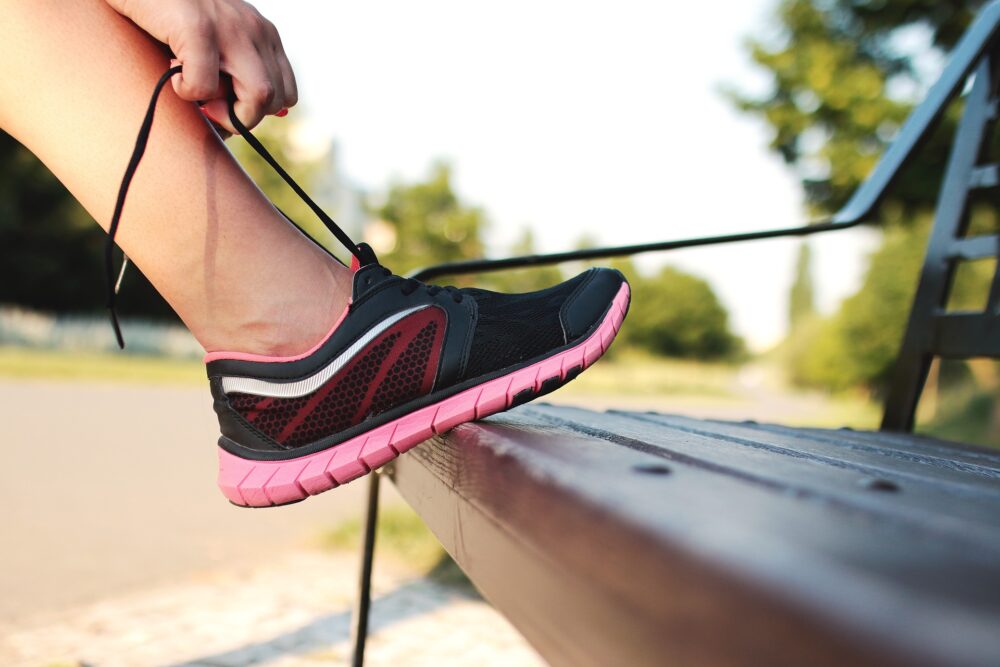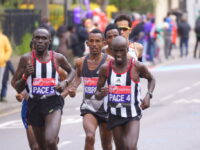It often seems like finding the perfect running shoes is more strenuous than running a race. Do you have high, low, or medium pronation? Do you heal or toe strike? What’s your weekly mileage? What type of ground are you running on? With all of the options on the market, choosing the right pair can be overwhelming.
While some designs claim to make you faster, the most important quality a sneaker can provide is injury prevention, because running slowly is faster than not running at all. Injuries are extremely common in long distance runners, with numerous studies claiming that anywhere between 20 – 75 percent of runners have been benched during their career.
Many recent trends have promoted healthy running, one of which being minimalist sneakers. They tend to have high flexibility, are lightweight, and have a low heel-top drop. The lack of cushion is promoted to prevent injuries by allowing a more natural heel strike, motion control, stabilization, and foot strength. Many studies have shown that minimalist shoes also improve running economy, the energy used to go a certain speed because runners wearing minimalist shoes tend to strike the ground with their mid- or front-foot, as opposed to their rear foot. This increases strike rate for a more efficient gait and theoretically allows the runner to go faster. The lightweight design requires less force during turnover, further increasing strike rate. A study by Journal of Science and Medicine in Sport found that training in minimalist shoes leads to improved time-trial performance by benefitting stride rate, stride length, and footfall pattern.
This being said, minimalist sneakers may have adverse effects. A study from Shanghai University of Sport found that, because minimalist sneakers promote forefoot strikes, they lead to more forefoot stress fractures. Another study found that, when compared to conventional running sneakers, minimalist sneakers can lead to bone marrow edema, the buildup of fluid in the bone marrow, more often.
Minimalist sneakers aren’t the only type of sneaker that promote injury prevention; maximalist shoes have similar promises with a nearly opposite design. Their design is centered on lots of cushioning and increased stack height — the height of material between your foot and the ground. Maximalist sneakers have a stack height above 30 millimeters, which is nearly 50 percent more than conventional sneakers. The increased cushioning can absorb much of the shock that would otherwise be absorbed in the runner’s joints. The high side walls also increase stability, which can be beneficial for people with ankle problems. Overall, they make walking and running very comfortable, similar to walking on a cloud.
While some designs claim to make you faster, the most important quality a sneaker can provide is injury prevention, because running slowly is faster than not running at all.
This being said, there are numerous drawbacks of maximalist sneakers. While the cushion can take stress off of the runner’s joints, it can decrease strength in the foot muscles and increase load in the knee. A study from Orthopaedic Journal of Sports Medicine found that, when compared to a neutral sneaker, runners experienced increased impact forces and loading rate, the rate at which forces are applied to your body. Another study from Scientific Reports found that maximalist shoes increase leg stiffness and impact loading.
So, what is the truth? Both maximalist and minimalist shoes have their benefits. Many runners wear a shoe with a larger cushion on easy runs and a minimalist shoe during races and hard workouts. John Murray, Women’s Varsity Cross Country and Track Coach at Northeastern University, comments that, “Minimalist shoes, such as racing flats, are good for workouts and races because they are light… and develop strong stabilizing muscles in your foot and lower legs, which translates to better reaction off the ground.” He adds, “It might not be good to train in these shoes all the time, because sometimes your feet need more cushion in order to recover, adapt, and regenerate your foot muscles.”
A poll from the Northeastern Men and Women’s Varsity Cross Country team found that 20.7 percent prefer a minimalist shoe, 37.9 percent prefer a maximalist shoe, and 41.4 percent prefer a neutral shoe. There is no right or wrong answer when it comes to finding the perfect running shoe. Murray states, “More than anything you want a shoe that fits your foot well to your foot and is comfortable.”
So yes, the search for the perfect running shoe may seem daunting, but don’t let it serve as an excuse not to get out the door!
Journal of Science and Medicine in Sport (2017). DOI: 10.1016/j.jsams.2017.04.013
Sci Rep (2018). DOI: 10.1038/s41598-018-35980-6
Orthopaedic Journal of Sports Medicine (2018). DOI: 10.1177/2325967118775720

